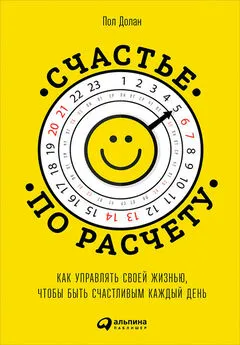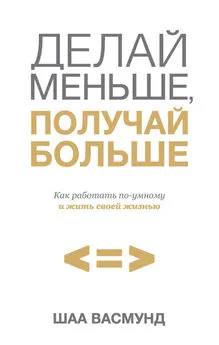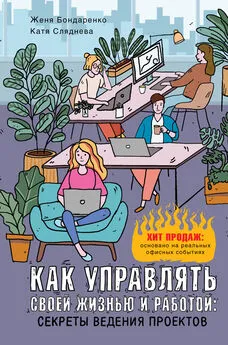Пол Долан - Счастье по расчету. Как управлять своей жизнью, чтобы быть счастливым каждый день
- Название:Счастье по расчету. Как управлять своей жизнью, чтобы быть счастливым каждый день
- Автор:
- Жанр:
- Издательство:Альпина Паблишер
- Год:2015
- Город:Москва
- ISBN:978-5-9614-3060-8
- Рейтинг:
- Избранное:Добавить в избранное
-
Отзывы:
-
Ваша оценка:
Пол Долан - Счастье по расчету. Как управлять своей жизнью, чтобы быть счастливым каждый день краткое содержание
Счастье по расчету. Как управлять своей жизнью, чтобы быть счастливым каждый день - читать онлайн бесплатно ознакомительный отрывок
Интервал:
Закладка:
315
Meiran N., Chorev Z., Sapir A. Component processes in task switching. Cognitive Psychology 2000; 41: 211–53.
316
Buser T., Peter N. Multitasking. Experimental Economics 2012: 1–15.
317
Wang Z., Tchernev J.M. The “myth” of media multitasking: reciprocal dynamics of media multitasking, personal needs, and gratifications. Journal of Communication 2012; 62; 493–513.
318
Kavetsos G., Koutroumpis P. Technological affluence and subjective well-being. Journal of Economic Psychology 2011; 32: 742–53; Brown J.R., Goolsbee A. Does the Internet make markets more competitive? Evidence from the life insurance industry. Journal of Political Economy 2002; 110: 481–507; Czernich N., Falck O., Kretschmer T., Woessmann L. Broadband infrastructure and economic growth. Economic Journal 2011; 121: 505–32.
319
Spira J., Feintuch J. The cost of not paying attention: how interruptions impact knowledge worker productivity. Basex, 2005.
320
Jackson T.W., Culjak G. Can seminar and computer-based training improve the effectiveness of electronic mail communication within the workplace? Proceedings of the 17th Australasian Conference on Information Systems 2006. Centre for Information Studies, Charles Sturt University.
321
Zhu E. Hypermedia interface design: the effects of number of links and granularity of nodes. Journal of Educational Multimedia and Hypermedia 1999; 8: 331–58.
322
Worthen B. The perils of texting while parenting. Wall Street Journal , Sept. 29, 2012.
323
Schwebel D.C., Stavrinos D., Byington K.W., Davis T., O’Neal E.E., de Jong D. Distraction and pedestrian safety: how talking on the phone, texting, and listening to music impact crossing the street. Accident Analysis & Prevention 2012; 45: 266–71.
324
Levy J., Pashler H., Boer E. Central interference in driving: is there any stopping the psychological refractory period? Psychological Science 2006; 17: 228–35.
325
DeVoe S.E., Pfeffer J. Time is tight: how higher economic value of time increases feelings of time pressure. Journal of Applied Psychology 2011; 96: 665.
326
DeVoe S.E., House J. Time, money, and happiness: how does putting a price on time affect our ability to smell the roses? Journal of Experimental Social Psychology 2012; 48: 466.
327
Aguiar M., Hurst E. Measuring trends in leisure: the allocation of time over five decades. Quarterly Journal of Economics 2007; 122: 969–1006.
328
Shah A.K., Mullainathan S., Shafir E. Some consequences of having too little. Science 2012; 338: 682–85.
329
Dolan P., Metcalfe R. With my money on my mind: income, happiness and intrusive financial thoughts. Unpublished working paper, 2011.
330
Smallwood J., Schooler J.W. The restless mind. Psychological Bulletin 2006; 132: 946.
331
Mason M.F., Norton M.I., Horn J.D.V., Wegner D.M., Grafton S.T., Macrae CN. Wandering minds: the default network and stimulus-independent thought. Science 2007; 315: 393–95.
332
Ziauddeen H., Farooqi I.S., Fletcher P.C. Obesity and the brain: how convincing is the addiction model? Nature Reviews Neuroscience 2012; 13: 279–86.
333
Killingsworth M.A., Gilbert D.T. A wandering mind is an unhappy mind. Science 2010; 330: 932.
334
Nolen-Hoeksema S., McBride A., Larson J. Rumination and psychological distress among bereaved partners. Journal of Personality and Social Psychology 1997; 72: 855–62.
335
Dolan P. Thinking about it: thoughts about health and valuing QALYs. Health Economics 2011; 20: 1407–16.
336
Gilkey J.G. You can master life. Macmillan, 1938.
337
Bennett P., Phelps C., Brain K., Hood K., Gray J. A randomized controlled trial of a brief self-help coping intervention designed to reduce distress when awaiting genetic risk information. Journal of Psychosomatic Research 2007; 63: 59–64.
338
Wood W., Quinn J.M., Kashy D.A. Habits in everyday life: thought, emotion, and action. Journal of Personality and Social Psychology 2002; 83: 1281–97.
339
Powers W. Hamlet’s BlackBerry. HarperCollins, 2011.
340
Spitzer M. Demencia digital (Digital dementia). Ediciones B, 2013.
341
Yuan K., Qin W., Wang G., et al. Microstructure abnormalities in adolescents with Internet addiction disorder. PloS ONE 2011; 6: e20708.
342
Hofmann W., Vohs K.D., Baumeister R.F. What people desire, feel conflicted about, and try to resist in everyday life. Psychological Science 2012; 23: 582–88.
343
Turkle S. Alone together: why we expect more from technology and less from each other. Basic Books, 2011.
344
Rothberg M.B., Arora A., Hermann J., Kleppel R., Marie P.S., Visintainer P. Phantom vibration syndrome among medical staff: a cross sectional survey. British Medical Journal 2010; 341.
345
The phone stacking game changes everything. Huffington Post , Oct. 1, 2012.
346
The communications market report. United Kingdom: a nation addicted to smartphones. OfCom, 2011.
347
The communications market report. United Kingdom: UK is now texting more than talking. OfCom, 2012.
348
Ferrari J.R., Harriott J.S., Zimmerman M. The social support networks of procrastinators: friends or family in times of trouble? Personality and Individual Differences 1998; 26: 321–31.
349
Borkovec T.D., Ray W.J., Stober J. Worry: a cognitive phenomenon intimately linked to affective, physiological, and interpersonal behavioral processes. Cognitive Therapy and Research 1998; 22: 561–76.
350
O’Donoghue T., Rabin M. Choice and procrastination. Quarterly Journal of Economics 2001; 116: 121–60.
351
Bui N.H. Effect of evaluation threat on procrastination behavior. Journal of Social Psychology 2007; 147: 197–209.
352
Jeanmonod R., Jeanmonod D., Ngiam R. Resident productivity: does shift length matter? American Journal of Emergency Medicine 2008; 26: 789–91.
353
Kahneman D., Tversky A. Intuitive prediction: biases and corrective procedures. DTIC Document, 1977.
354
Van Eerde W. A meta-analytically derived nomological network of procrastination. Personality and Individual Differences 2003; 35: 1401–18.
355
Buehler R., Griffin D., Ross M. Exploring the “planning fallacy”: why people underestimate their task completion times. Journal of Personality and Social Psychology 1994; 67: 366–81.
356
Amabile T.M., Hadley C.N., Kramer S.J. Creativity under the gun. Harvard Business Review 2002; 80: 52–61.
357
Frost R.O., Marten P., Lahart C., Rosenblate R. The dimensions of perfectionism. Cognitive Therapy and Research 1990; 14: 449–68.
358
Dolan P., Rudisill C. Babies in waiting: why increasing the IVF age cut-off is likely to lead to fewer wanted pregnancies. Under review, 2013.
359
Cadena X., Schoar A., Cristea A., Delgado-Medrano HM. Fighting procrastination in the workplace: an experiment. National Bureau of Economic Research, 2011.
360
Roy M., Christenfeld N., McKenzie C. Underestimating the duration of future events: memory incorrectly used or memory bias? Psychological Bulletin 2005; 131: 738–56.
361
Wohl M.J., Pychyl T.A., Bennett S.H. I forgive myself, now I can study: how self-forgiveness for procrastinating can reduce future procrastination. Personality and Individual Differences 2010; 48: 803–8.
362
Steel P. The nature of procrastination: a meta-analytic and theoretical review of quintessential self-regulatory failure. Psychological Bulletin 2007; 133: 65.
363
Shu S.B., Gneezy A. Procrastination of enjoyable experiences. Journal of Marketing Research 2010; 47: 933–44.
364
Ariely D., Wertenbroch K. Procrastination, deadlines, and performance: self-control by precommitment. Psychological Science 2002; 13: 219–24.
365
Kruger J., Evans M. If you don’t want to be late, enumerate: unpacking reduces the planning fallacy. Journal of Experimental Social Psychology 2004; 40: 586–98.
366
Duflo E., Saez E. The role of information and social interactions in retirement plan decisions: evidence from a randomized experiment. National Bureau of Economic Research, 2002.
367
Lee E. The relationship of motivation and flow experience to academic procrastination in university students. Journal of Genetic Psychology 2005; 166: 5–14; Read D., Loewenstein G., Kalyanaraman S. Mixing virtue and vice: combining the immediacy effect and the diversification heuristic. Journal of Behavioral Decision Making 1999; 12: 257–73.
368
Johns G., Jia Lin Xie, Yongqing Fang. Mediating and moderating effects in job design. Journal of Management 1992; 18: 657.
369
Lavoie J.A.A., Pychyl T.A. Cyberslacking and the procrastination superhighway: a web-based survey of online procrastination, attitudes, and emotion. Social Science Computer Review 2001; 19: 431–44.
370
Dolan P., Olsen J.A. Equity in health: the importance of different health streams. Journal of Health Economics 2001; 20: 823–34; Dolan P., Tsuchiya A. The social welfare function and individual responsibility: some theoretical issues and empirical evidence. Journal of Health Economics 2009; 28: 210–20.
371
Dolan P., Shaw R., Tsuchiya A., Williams A. QALY maximisation and people’s preferences: a methodological review of the literature. Health Economics 2005; 14: 197–208; Edlin R., Tsuchiya A., Dolan P. Public preferences for responsibility versus public preferences for reducing inequalities. Health Economics 2012; 21: 1416–26.
372
Amiel Y., Cowell F., Gaertner W. Distributional orderings: an approach with seven flavors. Theory and Decision 2012; 73: 381–99.
373
Dolan P., Edlin R., Tshuchiya, A. The relative societal value of health gains to different beneficiaries-final report. National Co-ordinating Centre for Research Methodology, 2008.
Читать дальшеИнтервал:
Закладка:










